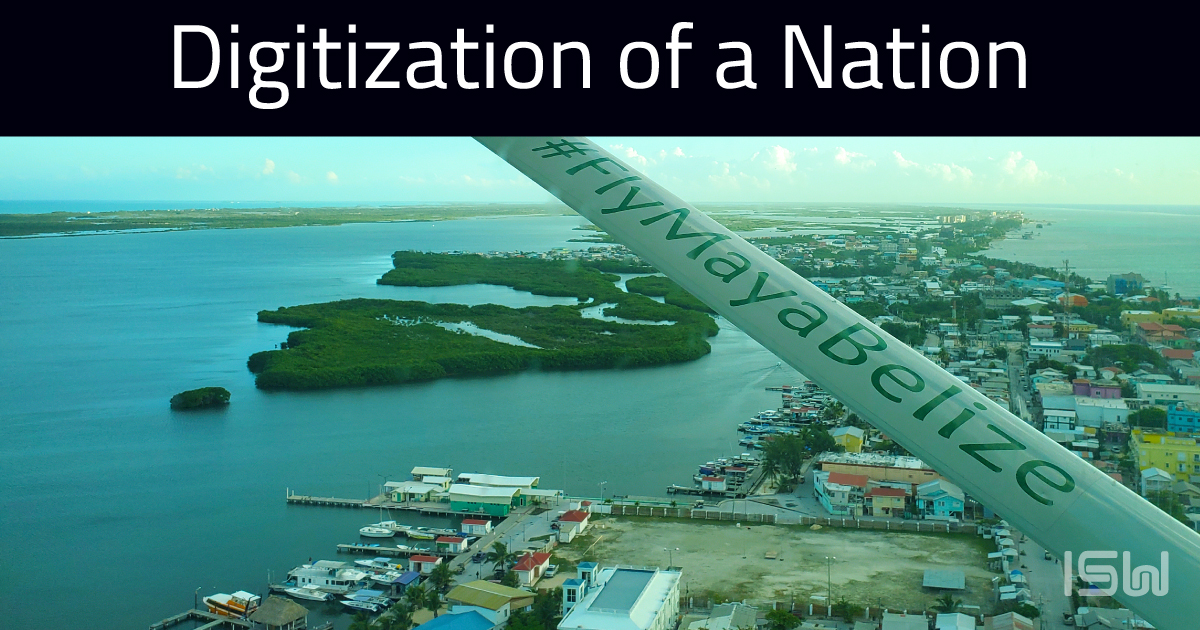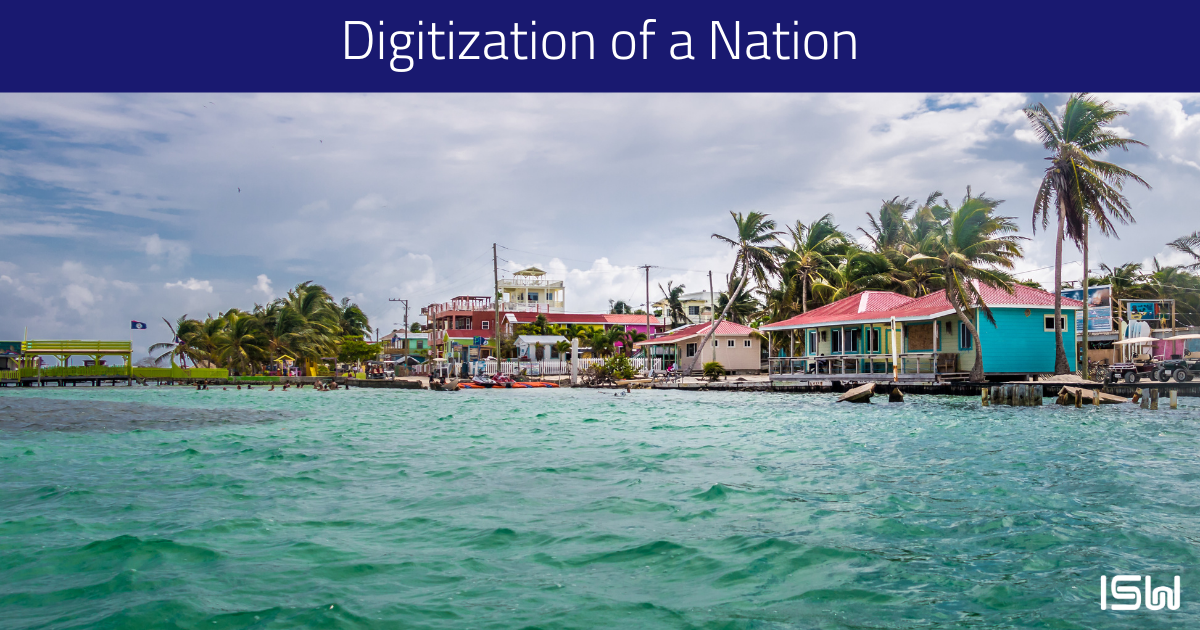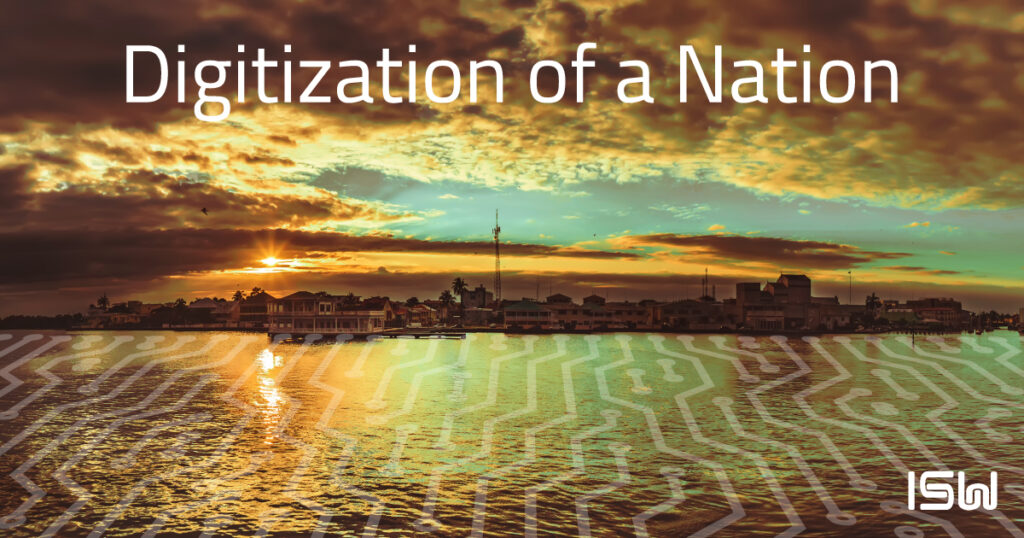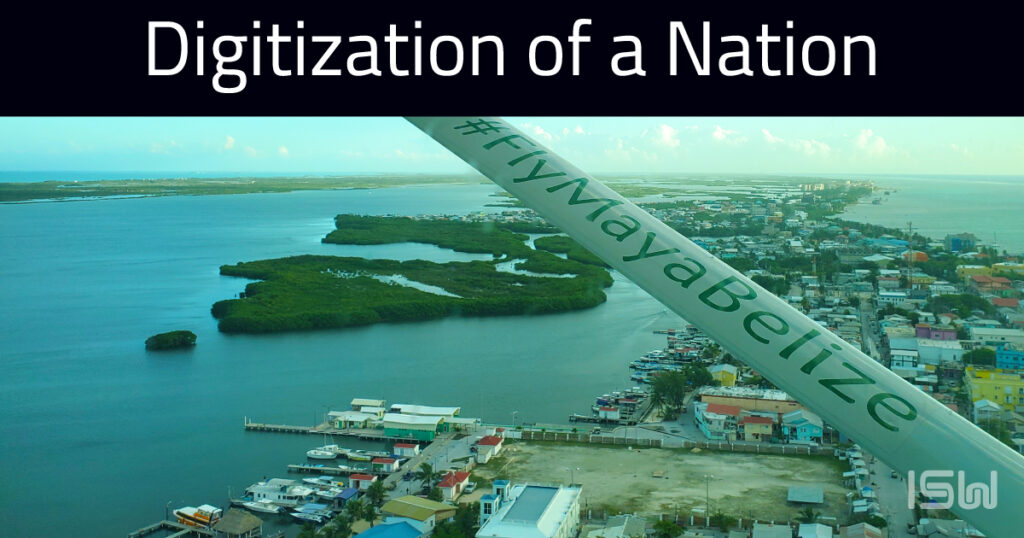Digitization of a Nation Part 1: The Opportunity

Digitization of a Nation is a colorful 4-part series highlighting the paperless technology journey of a developing country from concept to reality over a 15-year span.
It was a bright and balmy afternoon in September of 2007 when the wheels touched down at Philip S.W. Goldson International airport in Belize. At the time, I was a decade into my career and was working as a regional manager for Westbrook Technologies, (WTI), the developers of the flagship “Fortis” ECM solution.
As an avid traveler and former international business student, I was excited as this was my first opportunity to conduct impactful business outside of the U.S. I was honoring my college degree, helping our company expand internationally, and aligning my personal interest to learn more about the world.
I was almost immediately struck by Belize, a former colony of the United Kingdom known as British Honduras. This tiny, coastal, developing country in Central America, bordered by Guatemala, Mexico, and the Caribbean Sea, had gained its independence from the UK in 1981. As such, its population of 400,000 can truly be described as a very diverse melting pot. The majority of the Belizean population consists of 50% Mestizos (mix of Maya and Spanish), 21% Belizean Creoles (Kriols), and 4.5% Garinagu (mix of West/Central African, Arawak, and Island Carib). Most people speak English and many speak Creole or Spanish as well.
From a geographical and cultural standpoint, Belize really packs a punch. The Cayes, (pronounced Keys) are a series of beautiful islands off the Belizean coastline in the Caribbean Sea, the two most notable being Ambergris Caye, and Caye Caulker. Little did I know at the time that John McAfee was residing in Ambergris Caye off the grid. Being a technology professional, entrepreneur, and identifying with living a life outside of the box, I admired McAfee on several levels. This was of course well before his unsuccessful 2016 run for the Presidency, and well-documented issues became public.
Most of the Belizean business culture and leadership centers in Belize City, whereas the Central Government offices are in Belmopan, the mountainous jungle region in north-central Belize, a 3-hour drive from Belize City. Like most cities in developing countries in Central and South America, Belize City has its challenges. The city and region are affected by gang violence and the associated drug trade issues due to Belize’s geo-location along the Pan-American drug trade corridor. Overall, I found Belize to be reasonably safe and came to understand that the no-go zone was in a specific area in the south end of Belize City.
My trip and meetings had been arranged by our business partner, SecureDoc, an ECM solutions provider who was based out of South Florida. SecureDoc was a small organization managed by Belizeans who had connections in Belize and a desire to help digitize the country, knowing that there was a high level of need overall. During that first trip, SecureDoc had set up 9 or 10 meetings with interested entities. Over a 3-to-6-month period, I had been well-prepped for the meetings and knew the overall business case, the high-level decision-making process, and the potential solution champion for each potential client. This was still 2007, and much of the pre-sales process was centered around the almighty software demonstration. Having performed hundreds of Fortis application demonstrations at that point, I did my best to align the feature-driven demonstration to the specific use case of the client to emphasize their need.
The effort and the planning proved mutually beneficial as one entity decided to take a pioneering leap of faith and make the day-to-day business process and workflow-changing decision to move forward with our solution. The entity, IMMARBE (International Merchant Marine Registry of Belize), was at the time a unique blended government and business entity responsible for ship registration and compliance services for all vessels coming into Belize, as well as all Belizean ships working in international waters. As of this writing, the latter is actively managing 788 Belizean ships working worldwide. The use case for ECM was high; at the time, IMMARBE was a very document, data, and manual process intensive organization. This, in addition to being held to significant compliance and regulatory standards, IMMARBE had considerable ECM-specific needs.
An often overlooked, however most critical component to the consultative pre-sales solutions process is identifying who the client-side champion is. In the case of IMMARBE, we were exceptionally fortunate to be aligned with Manrique Vellos. At the time, Manrique was a young, up and coming IT manager who was well-respected by IMMARBE leadership, as well as the employees whose job tasks would be significantly changing as the result of an ECM implementation. Manrique combined all of the necessary traits of a client-side solution champion; specifically, he was intelligent, ambitious, communicative, and focused to managing a realistic plan which supported the vision of leveraging technology for automation. Importantly, Manrique was tasked with a difficult job in helping IMMARBE manage to change, and all of the trials and tribulations that come with it. Frankly, I admired Manrique’s courage relative to the weight of a pioneering decision to be the first to adopt ECM technology in the history of a nation.
In more than 20 years in the ECM industry, I have found that in addition to a strong client-side champion, the most important ingredients to a successful implementation are the client’s ability to manage change, coupled with a seasoned implementation and support firm that is adept at hand-holding the client through the most critical change management process in support of the solution champion. To that end, I knew that we, WTI (the developers of Fortis), were great at making software, however, ill-equipped to handle a change management driven and complex implementation. This is the case for most global software development firms. For the most part, software development firms are very good at making software, not good at managing implementation. SecureDoc, for their part, as a Fortis ecosystem sales partner and not a services partner, was not qualified for implementation and support. It was my responsibility as the ecosystem manager to determine which services firm was best suited for the project. Overwhelmingly (even in 2007), the culprit of failed projects was almost never a result of the technology itself, however, much more often due to lack of user adoption or lack of experience on the part of the deployment organization contracted for solution implementation and ongoing support.
The IMMARBE opportunity held considerable importance as the first ECM project of its kind in Belize. From a cultural standpoint, I felt that I had a hand in helping the progress of a developing country. From a professional standpoint, this was my most significant experience conducting business internationally up until that point. Based on my position as an ecosystem partner manager, accountable for the project implementation, it was critical to select an experienced service and support organization to provide the client and the project its best opportunity for success.
About the Author
Owen O’Connor is a career Content Services and ECM (Enterprise Content Management) consultant and practitioner, starting in the profession out of college in the late 1990’s. His ECM career has taken him all over the U.S., and more than 15 countries worldwide. Owen lives in coastal Rhode Island with his wife Jaime, 4 children, and dog, Sevvie.






